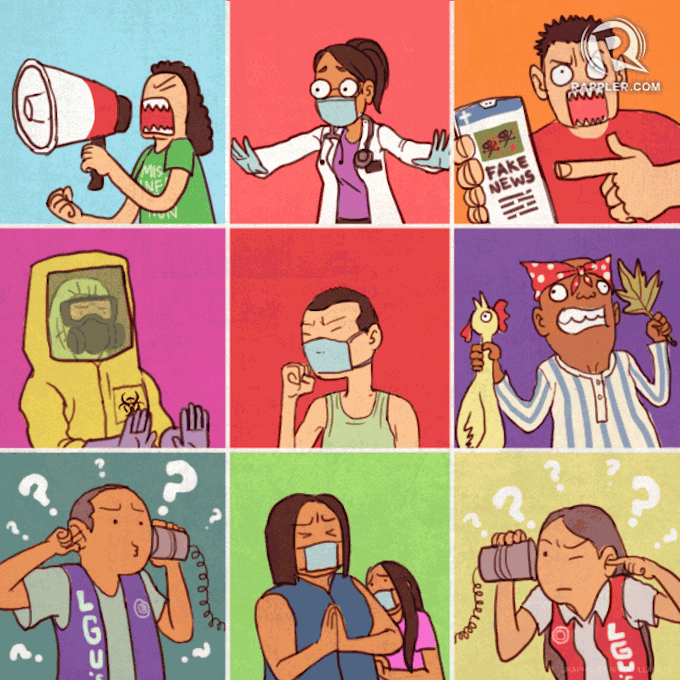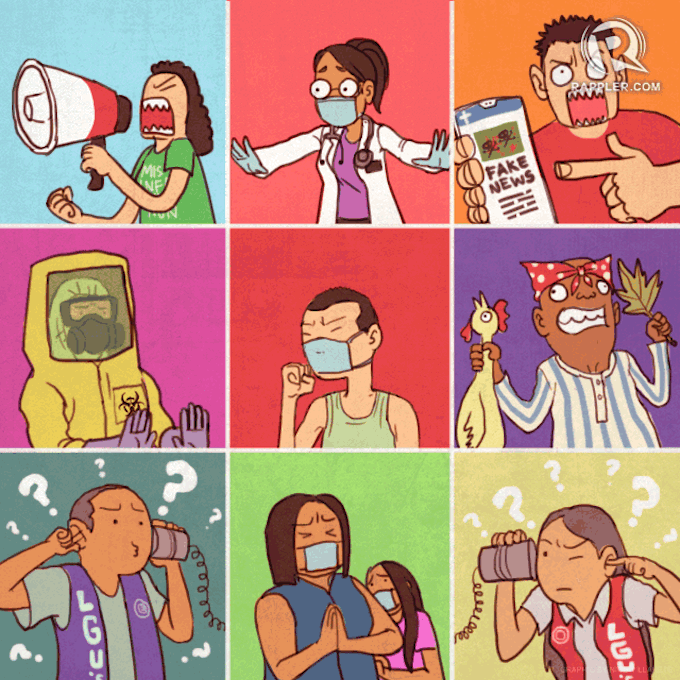
Rappler editorial
It’s not the virus. It’s not the Chinese flying into the Philippines. Our biggest enemy amid the Wuhan crisis is panic.
Here’s the situation: a new strain of the coronavirus has caused an outbreak in the city of Wuhan in central China. It has so far killed 106 people and infected more than 4500.
While the entire province of Hubei is on lockdown, the virus has nevertheless been transmitted by infected humans to at least 12 other countries.
READ MORE: Coronavirus update: NZ to team up with Australia to get citizens out of Wuhan
The Philippines is awaiting confirmation if the virus has reached its shores.
So far, the only case acknowledged by the Department of Health (DOH) to be under observation is a five-year-old boy from Wuhan who was isolated in a hospital in Cebu City starting January 12, and has since been discharged.
– Partner –
While the boy has exhibited flu-like symptoms, there’s no certainty yet that what he has is the newly-discovered 2019 novel coronavirus (nCoV), also called the Wuhan virus. It could be any of the 7 known coronaviruses. Health authorities are awaiting the results of lab tests done on the boy’s samples in Australia.
The Bureau of Immigration has tracked down the family of four whose father, after traveling from Wuhan to Hong Kong, has been found to be “preliminary positive” with the virus. Leaving the patient in HK, the family boarded a Cebu Pacific flight to Manila on January 22.
Monitoring movements
The Justice Department says it is monitoring the movements of that family, and “may refer them to Bureau of Quarantine” (BOQ). The airline urged the passengers of that flight 5J 111 to get themselves checked.
On Monday morning, January 27, Health Secretary Francisco Duque III said in a Malacañang briefing that the DOH was investigating 11 possible nCov cases in 6 regions in the country, but reiterated that there is no confirmed case yet.
Without any confirmation from health authorities, the rest of the supposed cases we’ve been reading about on social media are speculations or outright misinformation.
Understandably, Filipinos are worried. The 2019 nCov, which can infect a person’s airways, has symptoms similar to the deadly SARS-CoV of 17 years ago, and can be transferred from human to human. And while scientists have yet to understand the new virus’ life cycle, how exactly it’s transmitted, and whether it is going to mutate, there is no approved vaccine or treatment yet for the coronavirus infection.
As of January 28, DOH says there is still no confirmed case of the 2019 nCov in the Philippines
But we should caution ourselves against letting this worry spiral into panic. Because panic can blur our judgment. It makes us vulnerable to wrong information or speculation or conspiracy theories. It makes us discriminate against any person “who looks Chinese” and is wearing a mask, or is in the vicinity of a hospital.
It makes us question the specialists in the health department when they don’t seem to be as worried as we are. We nag our local governments to do drastic things that are outside the protocols established by the DOH.
Push for total ban
We’ve heard of Chinese-looking individuals not being allowed to enter the emergency room of a hospital – a nurse had to talk to them outside, and then they were turned away. In one city, we heard that some journalists were among those pushing the mayor to declare a total ban on Chinese tourists.
Some have made racist remarks about what the Chinese in the mainland eat.
Let’s go back to what authorities say we know about the Wuhan virus, and stick to that.
Arnaud Fontanet, head of the department of epidemiology at Institut Pasteur in Paris, says the 2019 nCov, in its current form, appears to be “weaker” than SARS. It’s too early to say whether the virus is going to mutate or not.
Rabindra Abeyasinghe, the country representative to the Philippines of the World Health Organisation (WHO), said as of January 21 that it was “too early to say this is a severe disease.” So far, those who have died had pre-existing illnesses, while not all of them had a history of getting in contact with the wet market in Wuhan where wild animals being sold were suspected to have been the source of the virus.
‘Basis for testing’
Through the WHO, China’s health ministry is expected to provide the Philippines and other countries a DNA sample of the 2019 nCoV. This “will serve as the basis for our own testing and treatment” via the Research Institute for Tropical Medicine, says Secretary Duque.
Duque says the Philippines’ “detection capability is still evolving,” but this should not be a handicap. Thanks to the internet, scientists from universities, research centers, and even private companies across the globe are collaborating online to study the Wuhan virus so China and other countries can all respond to it appropriately.
So far, the Philippines has suspended all direct flights to and from Wuhan, and has put its Bureau of Quarantine at the airports on high alert.
The DOH assures the public that it is ready in case the Wuhan virus reaches the Philippines, and this confidence stems from the fact that, since the 2003 SARS crisis, protocols on monitoring and testing are in place, and surveillance units are in place in the regions, cascading information and instructions down to the barangays.
Our part – as citizens, as local governments – is to take heed.
An editorial published today by the leading independent Philippines online news website.
Article by AsiaPacificReport.nz









